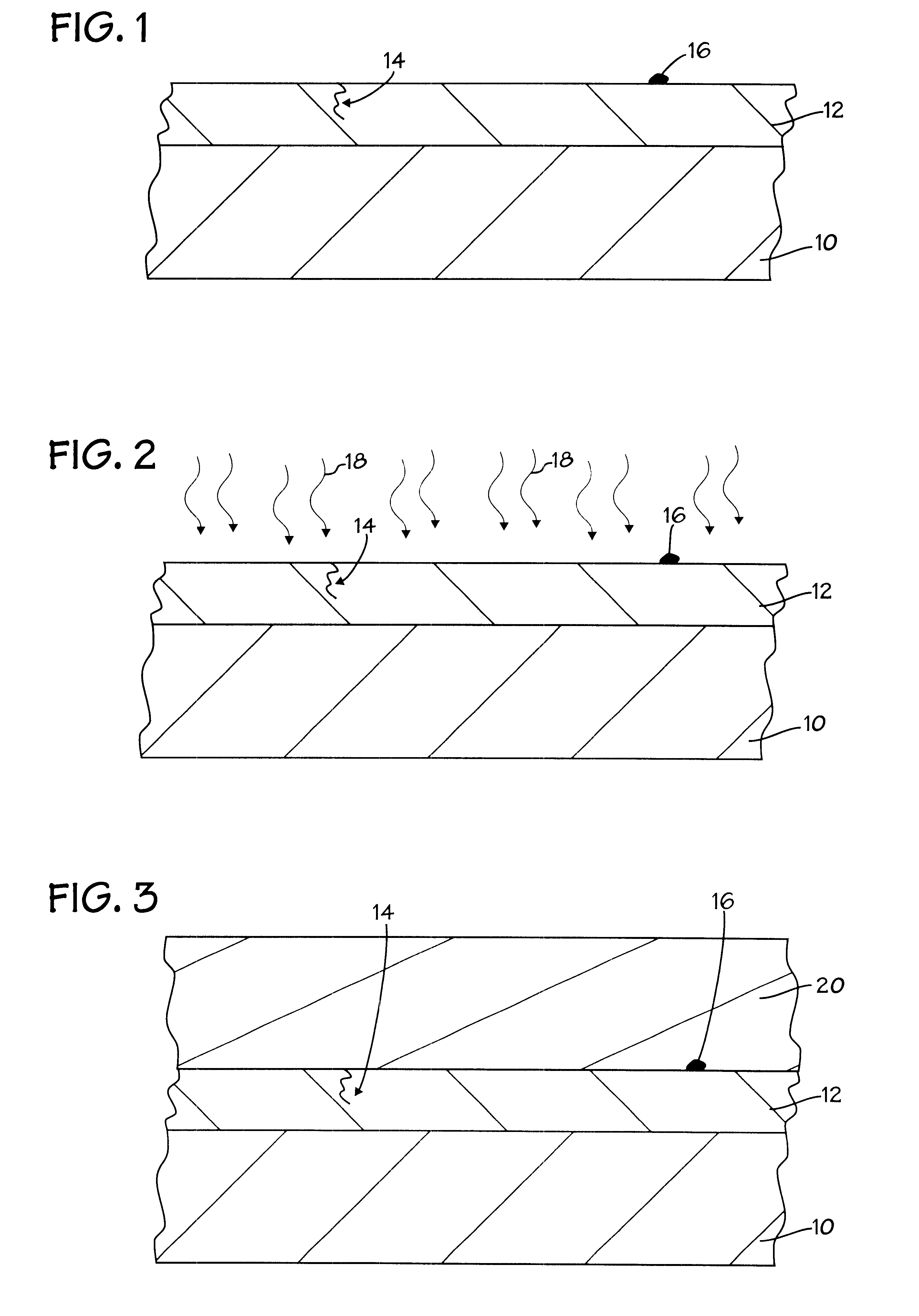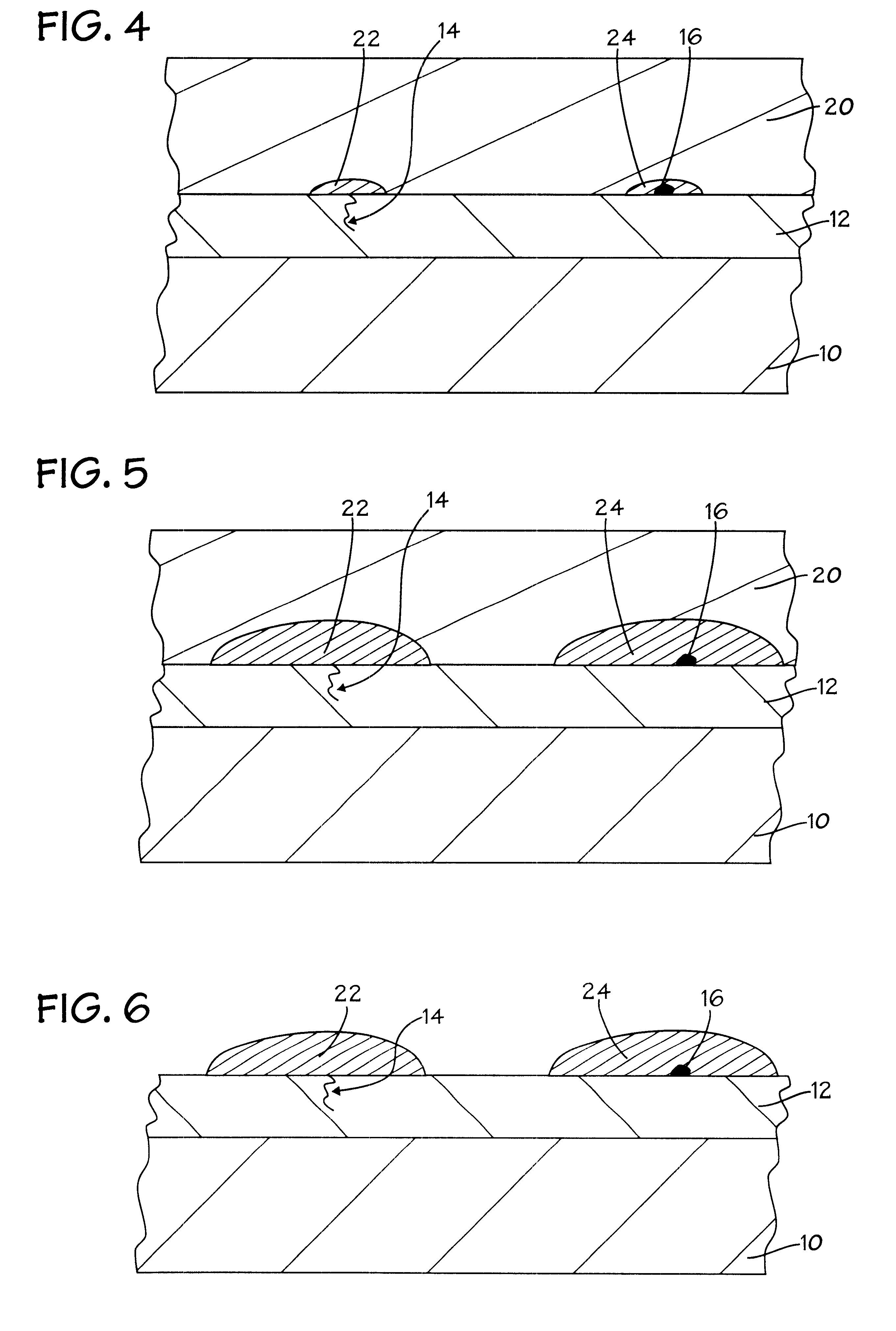Method of detecting film defects using chemical exposure of photoresist films
a technology of photoresist film and chemical exposure, applied in the field of semiconductor/solid-state device testing/measurement, instruments, photomechanical equipment, etc., can solve the problems of device failure, defect interference with subsequent lithography processing on the interlevel dielectric layer, and variety of defects during interlevel dielectric and metallization layer processing
- Summary
- Abstract
- Description
- Claims
- Application Information
AI Technical Summary
Problems solved by technology
Method used
Image
Examples
Embodiment Construction
In the drawings described below, reference numerals are generally repeated where identical elements appear in more than one figure. An exemplary method of inspecting a semiconductor workpiece 10 for defects may be understood by referring now to FIGS. 1-8 and initially to FIG. 1. FIG. 1 depicts a cross-sectional view of a small portion of the a semiconductor workpiece 10 upon which a semiconductor processing film 12 is formed. The workpiece 10 may be a semiconductor wafer or other type of substrate used in circuit fabrication and may be composed of silicon, silicon-on-insulator or other widely used substrate materials. The processing film 12 may be any of a variety of films used in semiconductor processing, such as, for example, oxide, silicon nitride, silicon oxynitride, polycrystalline or amorphous silicon or the like. For the purposes of the present illustration, the film 12 is an oxide film of the type used as interlevel dielectric layers.
As the skilled artisan will appreciate, t...
PUM
| Property | Measurement | Unit |
|---|---|---|
| thickness | aaaaa | aaaaa |
| thickness | aaaaa | aaaaa |
| thickness | aaaaa | aaaaa |
Abstract
Description
Claims
Application Information
 Login to View More
Login to View More - R&D
- Intellectual Property
- Life Sciences
- Materials
- Tech Scout
- Unparalleled Data Quality
- Higher Quality Content
- 60% Fewer Hallucinations
Browse by: Latest US Patents, China's latest patents, Technical Efficacy Thesaurus, Application Domain, Technology Topic, Popular Technical Reports.
© 2025 PatSnap. All rights reserved.Legal|Privacy policy|Modern Slavery Act Transparency Statement|Sitemap|About US| Contact US: help@patsnap.com



